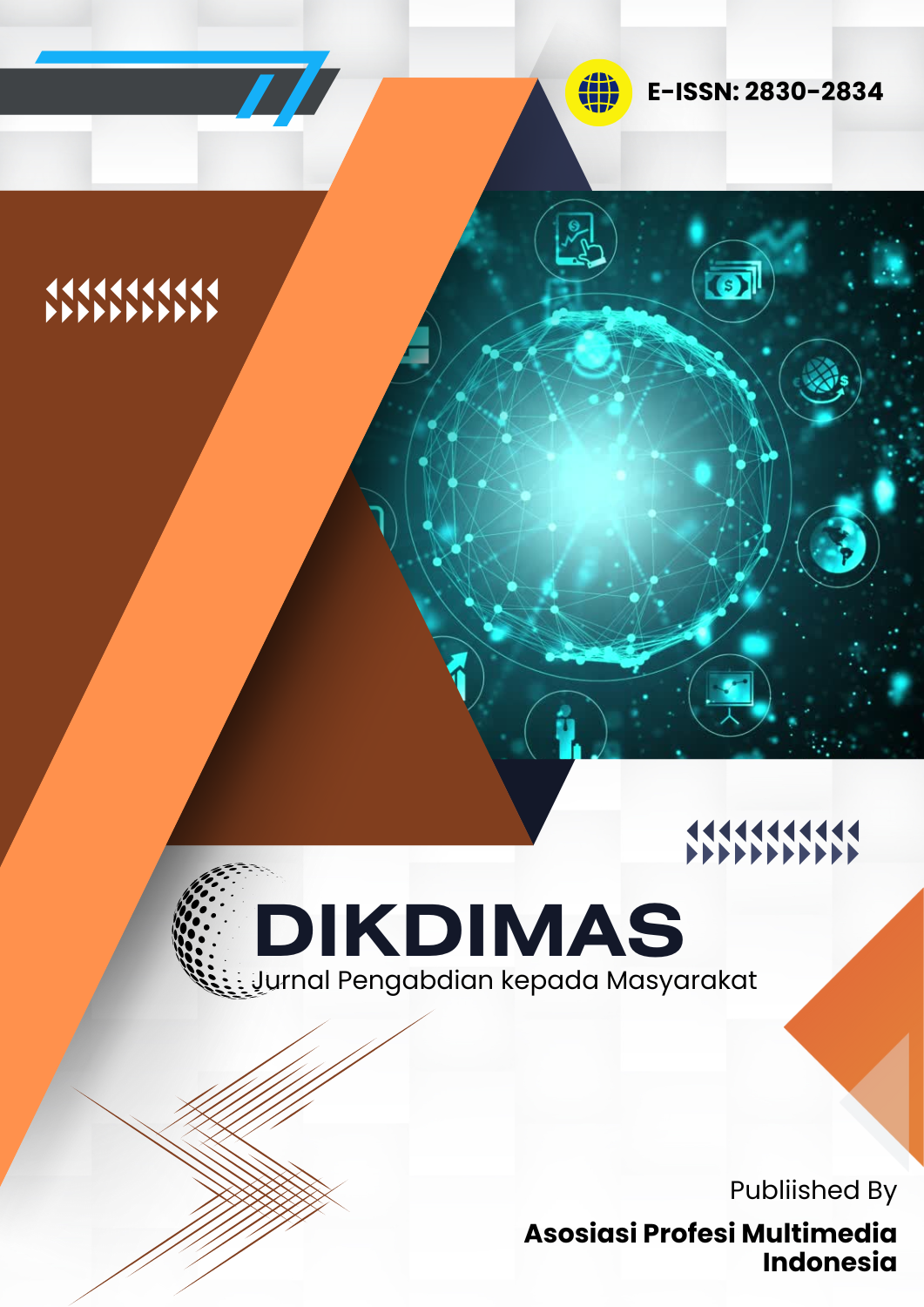Community-Based Development of Community Religious Behavior Through the Tegging Tourism Object of Suban District Rejang Lebong
Main Article Content
Abstract
The religious behavior of some young people often gets attention from society, such as the occurrence of brawls, leaving prayers, promiscuity, suicide and other negative behaviors. This service aims to find out: coaching, materials, constraints and follow-up community-based religious behavior development through Suban Cliff Tour, Rejang Lebong Regency. The subjects and objects of guidance in this activity are the community, namely several PAI Study Program students who are members of YBM BRI STAIN Curup. This service uses a model of counseling and mentoring with lectures, discussions and halaqa methods. Data in this service is taken based on the results of the service in the form of observations and interviews. Results of dedication: first, the formation of religious behavior through several stages. Second, the material of guidance includes the material of creed, worship and morals. Third, the obstacles encountered are financing, time and student assignments, the fourth follow-up of this activity is to provide independent tasks to assisted participants and related to the ability to read the Quran, there must be significant efforts from participants. Conclusion; This service is carried out in the form of fostering the religious behavior of the younger generation who are members of the YBMI BRI STAIN Curup community. Guidance in the form of assistance and counseling to fostered objects related to religious material which includes creed, worship and morals.
Downloads
Article Details
Copyright (c) 2024 Muhammad Idris, Karliana Indrawari, Achmad Syauqi Al Fanzhari, Koriatul Sadea

This work is licensed under a Creative Commons Attribution-ShareAlike 4.0 International License.
- Authors retain copyright and acknowledge that the Journal of Multidisciplinary Applied Natural Science is the first publisher, licensed under a Creative Commons Attribution License.
- Authors are able to enter into separate, additional contractual arrangements for the non-exclusive distribution of the journal's published version of the work (e.g., post it to an institutional repository or publish it in a book), with an acknowledgment of its initial publication in this journal.
- Authors are permitted and encouraged to post their work online (e.g., in institutional repositories or on their website) prior to and during the submission process, as it can lead to productive exchanges and earlier and greater citation of published work.
References
Çevrimkaya, M., & Zengin, B. (2023). The mediating role of memorable tourism experience on tourist behavior: A perspective on organized tours. Tourism and Management Studies, 19(2), 61–72. https://doi.org/10.18089/tms.2023.190205
Fibrianti, B. S. (2022). Kajian Perencanaan Taman Wisata Dengan Konsep Transformasi Bentuk Di Kawasan Wisata Senggigi Lombok Barat. Journal of Mandalika Literature, 3(1), 79–87. https://doi.org/10.36312/jml.v2i4.939
Hary, H. (2017). Pengaruh Daya Tarik Wisata Keselamatan dan Sarana Wisata Terhadap Kepuasan Serta Dampaknya Terhadap Loyalitas Wisatawan. Jurnal Media Wisata, 15(1), 527–577. https://doi.org/10.36276/mws.v15i1.57
Khairi, M., & Darmawan, D. (2021). The Relationship between Destination Attractiveness, Location, Tourism Facilities, and Revisit Intentions. Journal of Marketing and Business Research, 1(1), 39–50. https://doi.org/10.56348/mark.v1i1.32
Koistinen, T. (2023). Religion, fiction, and facts. Studia Theologica - Nordic Journal of Theology, 1–21. https://doi.org/10.1080/0039338X.2023.2264266
Malawati, S. N., & Yahya, W. (2022). Peran Masjid Imadudding Jl. Sabang No. 17 Bandung dalam Pembinaan Masyarakat. Jurnal Riset Komunikasi Penyiaran Islam, 2(1), 31–35. https://doi.org/10.29313/jrkpi.v2i1.863
Mukhirto, M., & Fathoni, T. (2022). Strategi Pemerintah Desa Gandukepuh Terhadap Pengembangan Objek Wisata Religi. Journal of Community Development and Disaster Management, 4(1), 23–35. https://doi.org/10.37680/jcd.v4i1.1264
Muslimin, E., & Ruswandi, U. (2022). Tantangan, Problematika dan Peluang Pembelajaran Pendidikan Agama Islam di Perguruan Tinggi. Tarbiatuna: Journal of Islamic Education Studies, 2(1), 57–71. https://doi.org/10.47467/tarbiatuna.v2i1.652
Nagy, K. X. H., & Segui, A. E. (2020). Experiences of community-based tourism in Romania: chances and challenges. Journal of Tourism Analysis, 27(2), 143–163. https://doi.org/10.1108/JTA-08-2019-0033
Pradana, T., & Purba, A. S. (2023). Pengaruh Atraksi Wisata, Citra Destinasi dan Aksesibilitas, Terhadap Minat Berkunjung Wisatawan di Objek Wisata Gunung Dago, Bogor. Cakrawala, 6(1), 275–288. https://doi.org/10.52851/cakrawala.v6i1.242
Sulhan, M., & Januri, M. R. (2022). Esensi agama dalam konflik sosial di kabupaten Poso menggunakan teori Karl Marx: Sebuah literatur review. Acta Islamica Counsenesia: Counselling Research and Applications, 2(1), 15–28. https://doi.org/10.59027/aiccra.v2i1.171
Sun, J., Zhang, J. H., Zhang, H., Wang, C., Duan, X., & Chen, M. (2020). Development and validation of a tourism fatigue scale. Tourism Management, 81, 104121. https://doi.org/10.1016/j.tourman.2020.104121
Syahrial, S., & Badollahi, M. Z. (2020). Development of a Community-Based Marine Tourism Attraction in the Samboang Beach in Bulukumba Regency. Journal La Bisecoman, 1(2), 1–9. https://doi.org/10.37899/journallabisecoman.v1i2.83
Teichert, T., Sun, H., & González-Martel, C. (2021). Sequence effects of city tour experiences: A tourism fatigue perspective. Journal of Destination Marketing and Management, 21, 1–9. https://doi.org/10.1016/j.jdmm.2021.100646
Ushama, T., Zacky, M. F. M., Najmudeen, M. R., Ashath, M., & Hassan, S. L. M. (2023). Muslim Religious Leadership Education in the Minority Context: the Role of Naleemiah Institute of Islamic Studies. Hamdard Islamicus, 46(2), 29–46. https://doi.org/10.57144/hi.v46i2.697



 Muhammad Idris
Muhammad Idris
